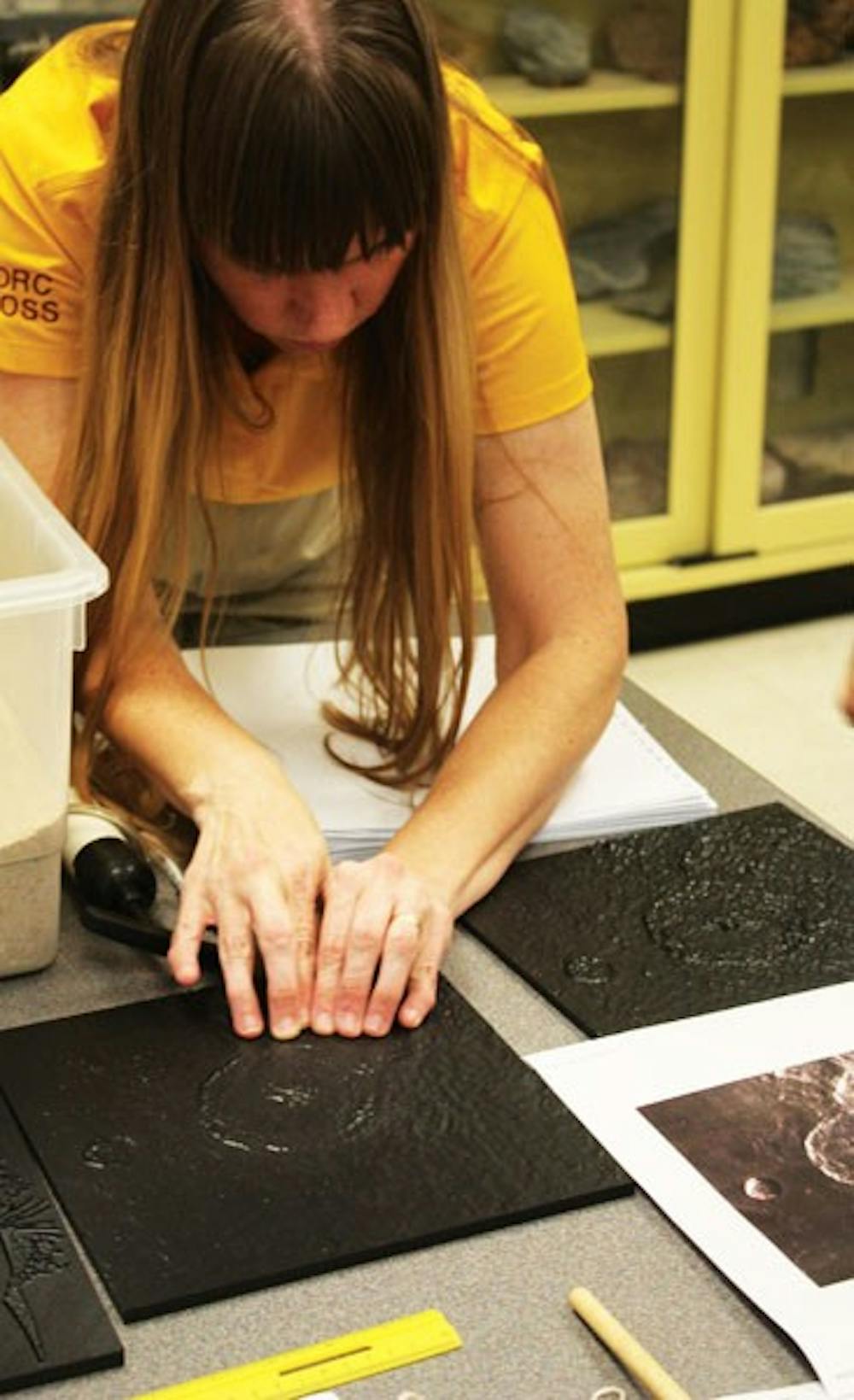 Jess Newton, who works in the Disability Resource Center creating the braille books, compares and contrasts the braille copy of an image with the corresponding 3-D image board. The 3-D tactile boards are in the testing process to help visually impaired students with labs. (Photo by Brooke Lawson)
Jess Newton, who works in the Disability Resource Center creating the braille books, compares and contrasts the braille copy of an image with the corresponding 3-D image board. The 3-D tactile boards are in the testing process to help visually impaired students with labs. (Photo by Brooke Lawson)Molecular biosciences and biotechnology senior Ashleigh Gonzales lost her eyesight as a 13-year-old. A lack of tools for visually impaired science students threw up obstacles in her academic life.
While her visual impairment offers challenges in learning, it inspired Gonzales to contribute to technology development to minimize these challenges.
Gonzales inspired the creation of 3-D tactile boards in a program called 3-D IMAGINE, which is used to help visually impaired students learn material without the help of a lab aide.
These boards are made from a cheap plastic in a machine that can carve detailed pictures pertaining to each course into the plastic.
Each board costs about $60 and it takes two hours to carve the images.
Although Gonzales was blind by the time she started high school, her love for science continued to flourish.
She said her lack of vision made it harder to learn the material on her own.
“I had to rely on teachers being creative … and descriptions from peers,” Gonzales said.
Determined not to let her loss of vision hold her back, Gonzales came to ASU on a full scholarship.
One of Gonzales’ instructors, research scientist Page Baluch, came up with the idea for the boards.
She saw how much Gonzales could excel if she had the right tools instead of having to rely on a lab aide, Baluch said.
“(Gonzales) is just as smart (as the other students), but she just unfortunately can’t see the stuff,” Baluch said.
She said the boards are in the pilot stage and have only been tested in a couple of science labs.
The goal is to make usage of these boards widespread for several different courses, age groups and even students without disabilities, Baluch said.
For now, these tactile boards are just being geared for the visually impaired.
Lab teacher’s assistant Eric Hasper, who works with visually impaired students in his lab section using the 3-D boards, wanted to do something more for these students.
Hasper won half of the ASU/NASA Space Grant, which connects ASU research with NASA. The other half of the grant was given to a partner to continue with the research and development of these boards.
“We’ve learned when making these … that the more detailed they get, the more they see, and the more they really enjoy the image,” Hasper said.
Gonzales said she is excited to be involved with a project that can affect so many people.
“If we can get more blind people interested in science, hopefully they’ll consider it,” Gonzales said.
Reach the reporter at bmlawso2@asu.edu or follow her on Twitter at @brookeml.




